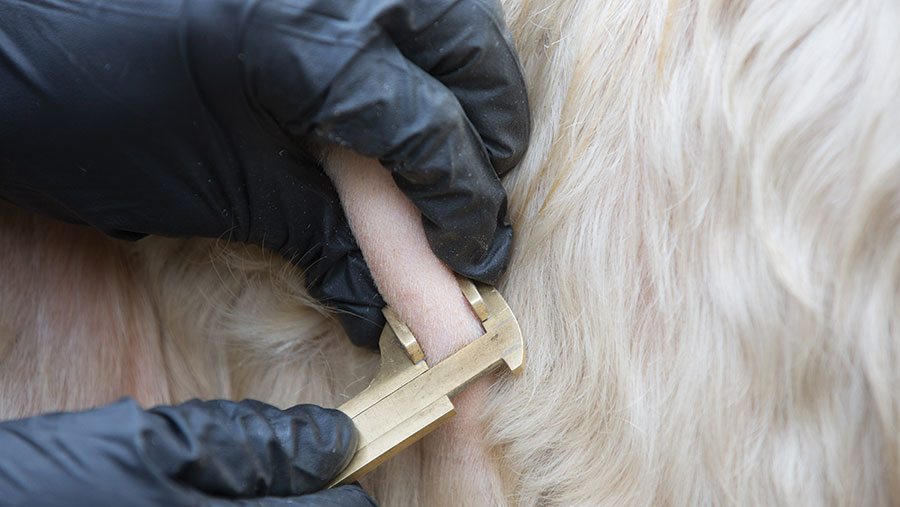Welsh bovine TB policy ‘destined to fail’, say ex-Defra vets
 © Tim Scrivener
© Tim Scrivener The Welsh government’s failure to tackle the reservoir of disease in badgers will see its policy to eradicate bovine TB end in failure, say veterinary experts.
The warning comes from two former Defra vets and an experienced senior practitioner, representing a group of frustrated vets and farmers.
The Labour-led Welsh government is pursuing a policy focused on cattle measures alone, after plans for a badger cull under the previous coalition government were scrapped.
See also: 5 ways to improve TB control in the UK
Christianne Glossop, Wales’ chief veterinary officer (CVO), has claimed that cattle-to-cattle spread is driving the epidemic and is responsible for at least 60% of herd breakdowns.
TB slaughterings up 31%
The latest official figures show this policy resulted in 13,078 cattle being slaughtered in Wales as TB reactors in the 12 months to September.
That is a 31% increase on the previous 12 months (9,946). In Wales, 76,769 cattle have been slaughtered between 2010 and 2018.
One of the most controversial aspects of the Welsh government’s bovine TB policy has been its “enhanced measures” programme, where all skin tests are switched to severe interpretation, with inconclusive reactors also included for slaughter and annual herd gamma interferon blood tests carried out.
This is enforced on farms where an outbreak has continued for 18 months or more, whether or not TB has been confirmed by finding an animal with TB lesions at slaughter.
“Our great concern in Wales is the very high number of reactors showing no signs of TB at post-mortem, particularly in the ‘enhanced measures’ reactors, which we consider is the result of an oversensitive testing regime,” a spokesperson for the group told Farmers Weekly.
A freedom of information request sent by the group to Defra’s Animal and Plant Health Agency revealed that during 2018 and up to end of June 2019, almost 9,000 (8,995) animals had been slaughtered from 661 farms in Dyfed, the worst-affected county.
The total of TB-lesioned animals was 1,019. But only six cattle showed gross TB lesions in the lungs (0.6%).
In the South West, TB lung lesions in cattle are typically found in about 2% of cases, compared with only 0.6% seen in Dyfed.
In south-west England, it was found that more than half of breakdowns had only one reactor with a lesion and up to about 80% had three or less.
In Dyfed, the figures are much the same, with 50% of breakdowns having only one reactor and almost 70% with three or less.
“Together with the very low number of lung TB cases found in Dyfed, we consider it incompatible with the CVO’s claim of cattle-to-cattle spread,” said the group.
It believes that many false positive reactors have merely taken in small numbers of TB bacteria during grazing badger-contaminated pasture, which “triggered these highly sensitive tests, and would be extremely unlikely to ever develop into TB”.
The group added: “Those that have taken a larger or infective dose sufficient to seed TB disease would have been normally detected by the skin test at standard interpretation. Experience has shown that its use every 60 days until the herd is clear is highly effective.”
Reservoir of disease
The group said vets and farmers have known for a long time that badgers are a serious reservoir of bovine TB. “At the end of the programme of control by strategic gassing of infected setts in 1981, there were just 80 outbreaks nationally,” it added.
But it warned that there is no hope for Welsh farmers to eradicate bovine TB “while this policy prevails and the origin of cattle infection remains ignored”.
The vets are Dr John Gallagher, former head, Defra’s Veterinary Investigation Service, Devon and Cornwall; Roger Sainsbury, former Defra lead specialist TB vet officer, Cornwall; and Richard Thomas, former principal, Priory Vets, Cardigan.
Welsh government response
The Welsh government said it was important not to focus on one measure to tackle a complex disease situation.
“Recent scientific studies did not provide conclusive evidence that culling badgers alone would reduce incidence levels in cattle herds,” said a Welsh government spokesperson.
However, controlling transmission among cattle is a priority in its strategy for eliminating TB. “It has been proven that more infection is transmitted within species than between species, which suggests that controlling transmission among cattle is a priority in the strategy for eliminating TB.”
Measures of incidence and prevalence at herd level are more significant indicators of disease progression than the number of animals slaughtered, the spokesperson said.
An experienced vet’s view
Gloucestershire vet Roger Blowey has more than 50 years of experience testing cattle for bovine TB.
He said farmers are concerned that a large number of cattle that react to the TB test are being culled, but many simply could have only been exposed to the infection.
He explained: “Many of these cows may have already overcome the infection themselves, but are left with an immune response and therefore react to the skin test.
“There may be other cows where there are only very small foci of infection, and while these animals may react to the skin test, they are not infectious to others and therefore not significant in the epidemiology of the disease.”
What we do not know is how many of these latter animals might become infectious later in life, he added, although, as the lifespan of cattle is relatively short, it may well be that they go to slaughter well before they become infectious.
